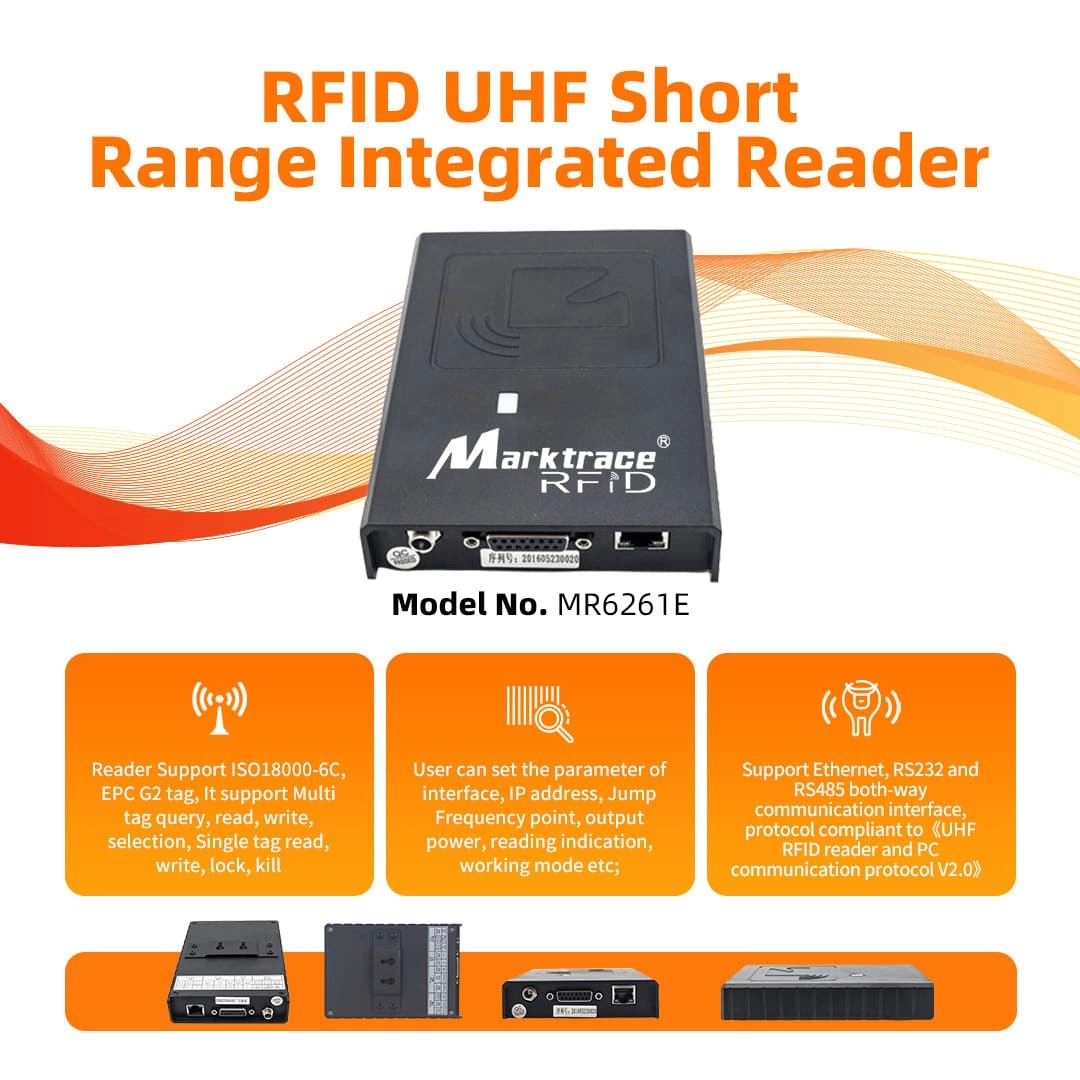- This topic is empty.
-
AuthorPosts
-
14/07/2025 at 14:11 #4273
With the rapid development of modern information technology, animal husbandry and agriculture have also ushered in a wave of digitalization and intelligence. As an important part of the Internet of Things, RFID technology is widely used in various industries, among which ultra-high frequency RFID readers are particularly outstanding. With its advantages of long reading distance, fast recognition speed, and support for multi-tag reading, ultra-high frequency RFID readers play an important role in animal husbandry and agriculture, greatly promoting the transformation a

nd upgrading of these two traditional industries.
This article will deeply analyze the technical characteristics of ultra-high frequency RFID readers, their specific application scenarios in animal husbandry and agriculture, the actual value they bring, as well as the challenges they face and future development directions.
1. What is an ultra-high frequency RFID reader?
RFID technology is an automatic identification technology that uses radio waves to identify and track target objects. According to the frequency, RFID is usually divided into low frequency (LF), high frequency (HF) and ultra-high frequency (UHF). Among them, ultra-high frequency (generally 860~960MHz) has the following significant advantages over low frequency and high frequency:
Long reading distance: usually up to 3-10 meters, or even farther.
Fast reading speed: hundreds of tags can be identified at the same time.
Strong anti-interference ability: adapt to complex environments.
Large data capacity: support more identification information.
UHF RFID reader is the key equipment to realize these characteristics. It realizes data collection and upload through wireless communication with tags, and is an important infrastructure for building smart animal husbandry and smart agriculture.
2. Application of UHF RFID Reader in Animal Husbandry
2.1 Livestock Identification and Management
In traditional animal husbandry, ranchers usually rely on manual or ear tags, tattoos and other methods to mark livestock identities. These methods are not only easy to confuse and lose, but also prone to human errors. By giving each livestock an ear tag or foot ring with an UHF tag, ranchers can use UHF RFID readers to quickly and accurately read the identity information of each livestock at a long distance.
For example:
Information such as milk production, breeding time, and health status of dairy cows can be bound to tags.
In large-scale grazing, even if the herds are scattered, managers can quickly count the number and accurately locate individuals.
2.2 Feeding Management
In a farm, ensuring that each livestock gets the right feed ratio and feeding time is an important part of improving efficiency. Using UHF RFID readers and tags, feed machines can automatically identify the individuals currently eating, and automatically adjust the feed ratio according to their weight, health status and other data to avoid waste and nutritional imbalance.
2.3 Disease Prevention and Traceability
UHF RFID readers are also widely used in animal disease prevention and control. By identifying the electronic identity of livestock, sick animals can be quickly isolated, their contact history and source can be traced, and the spread of the epidemic can be effectively prevented. This is of great significance for ensuring food safety and public health.
2.4 Entry and Exit Management
In livestock trading markets, slaughterhouses and other places, UHF RFID readers can quickly complete livestock entry and exit records, improve efficiency and prevent omissions or errors.
3. Application of UHF RFID Readers in Agriculture
In addition to its application in animal husbandry, UHF RFID readers have also shown great potential in agriculture.
3.1 Agricultural product planting management
In large-scale planting, UHF RFID readers can be used to identify and record information such as the variety, planting time, fertilization and irrigation records of each plot of land and each row of crops. The staff can hold or fix the UHF RFID reader to read the field tag data at a long distance, which is convenient for management and analysis.
For example:
Orchard management: record the variety, pollination, pruning history, etc. of each fruit tree.
Vegetable planting: track the growth cycle and pesticide use of each batch of vegetables.
3.2 Agricultural product harvesting and traceability
After the agricultural products are harvested, by reading the UHF RFID tags attached to the fruit boxes and vegetable baskets, the quantity can be quickly counted, the harvesting time and location can be recorded, and the data can be uploaded to the system. Consumers can trace the origin, planting environment and circulation process of the product by scanning the code, which greatly enhances the transparency of food safety.
3.3 Agricultural machinery and equipment management
The frequency of use, maintenance records, and location of various mechanical equipment in the farmland can be managed by installing UHF tags. UHF RFID readers can realize fast inventory, positioning, and avoid loss or mixing.
3.4 Warehousing and logistics
During the storage, outbound and transportation of agricultural products, UHF RFID readers can quickly and batch read the labels of shipped goods, realize automated inventory management and transportation scheduling, improve efficiency, and reduce labor costs and error rates.
4. Advantages of UHF RFID readers
The main advantages of applying UHF RFID readers in animal husbandry and agriculture include:
Automated identification: reduce manual intervention and reduce error rates.
Long-distance reading: convenient for large-scale management and improve efficiency.
AuthorPostsViewing 1 post (of 1 total)- You must be logged in to reply to this topic.